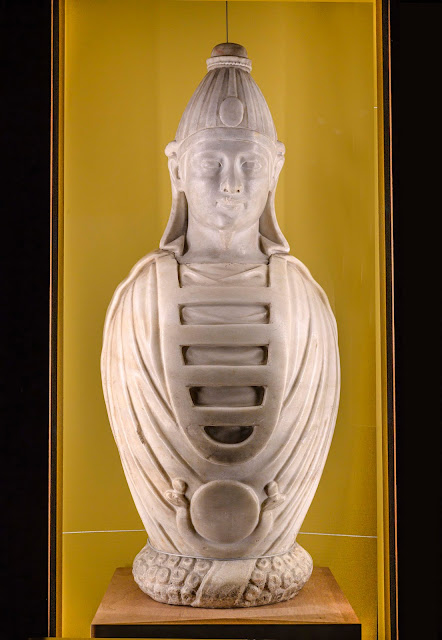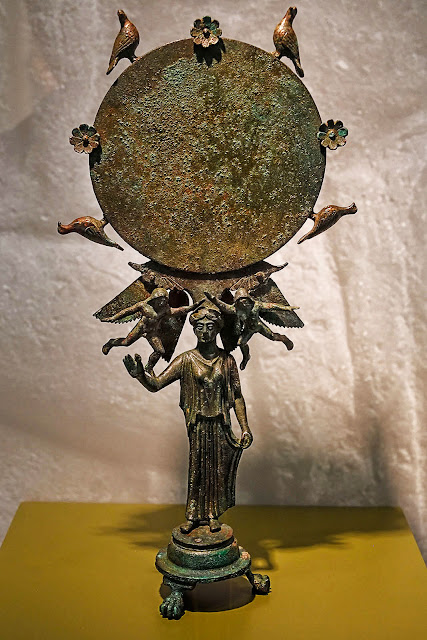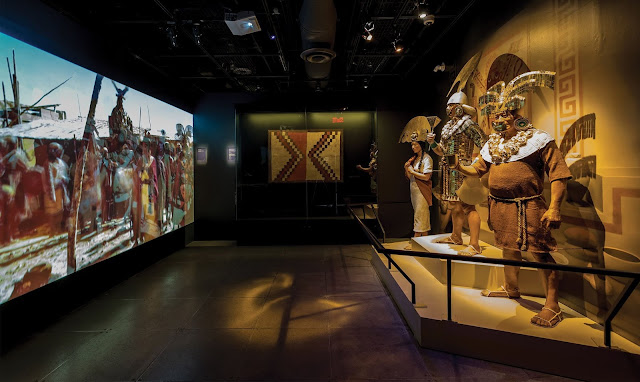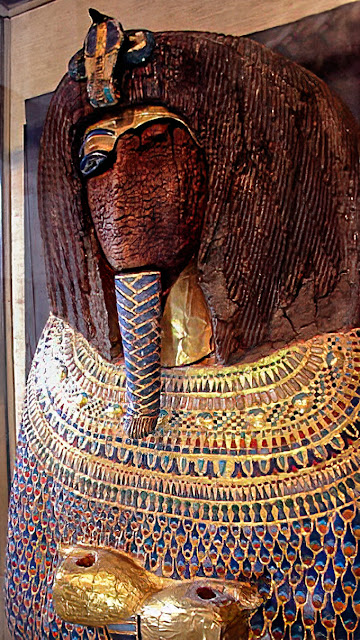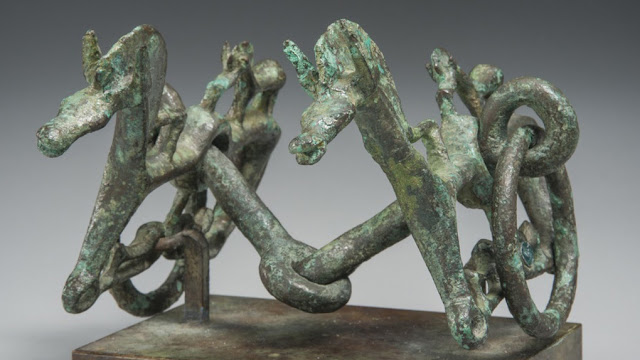Perfume jar (balsamarium) in the shape of a female head (Aphrodite or Turan?) late 3rd to early 2nd century BCE Italic, Etruscan at the Museum of Fine Arts Boston
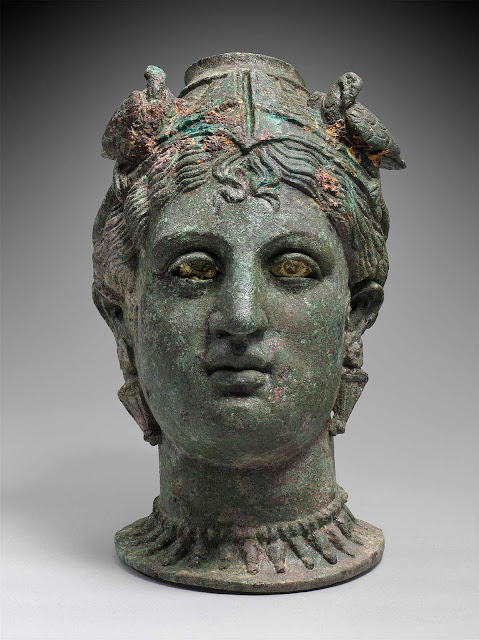
Perfume jar (balsamarium) in the shape of a female head (Aphrodite or Turan?) late 3rd to early 2nd century BCE Italic, Etruscan at the Museum of Fine Arts Boston. This balsamarium or perfume vase is in the shape of a woman's head, most likely the goddess of love, Turan or the Lassae, Etruscan spirits of beauty who waited on divine and mortal women at their toilet. As it was found in a tomb in Etruria (between Ferentinum and Bomarzo), most likely it was a prized possession of a wealthy Etruscan lady. The head is decorated with a diadem with two doves (associated with the worship of Aphrodite), elongated drop earrings, and a necklace of pendants. The eyes were inserted--probably glass irises were set into a fine lime paste. The base is decorated with a rosette. It was purchased from collector Edward petty Warren for over $69,000. Its dimensions are 4 1/8 by 3 by 2 1/2 inches. Perfume jar (balsamarium) in the shape of a female head (Aphrodite or Turan?) late 3rd to early 2n
